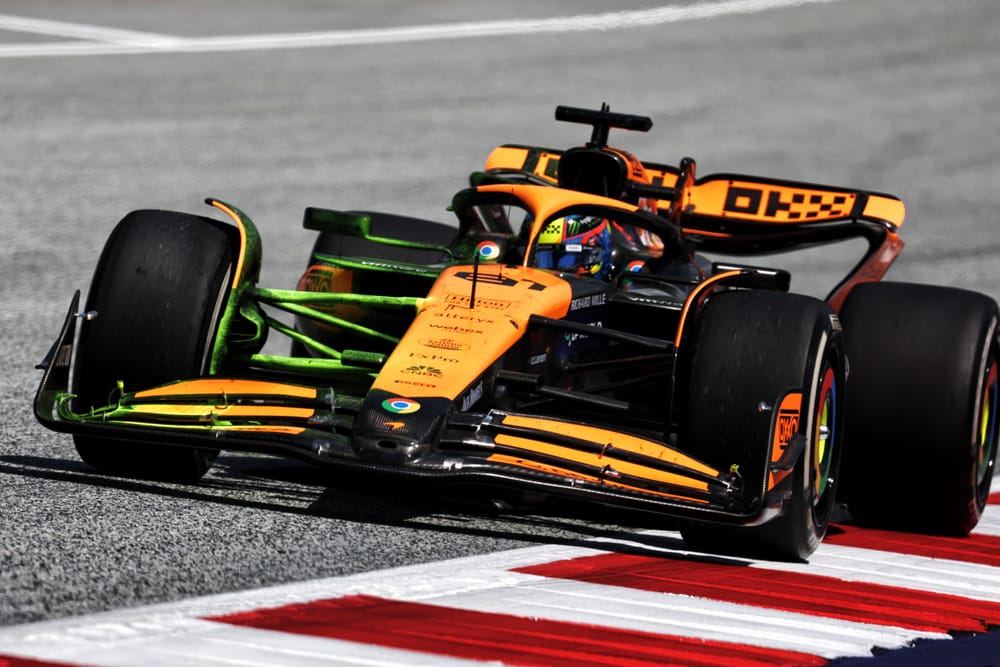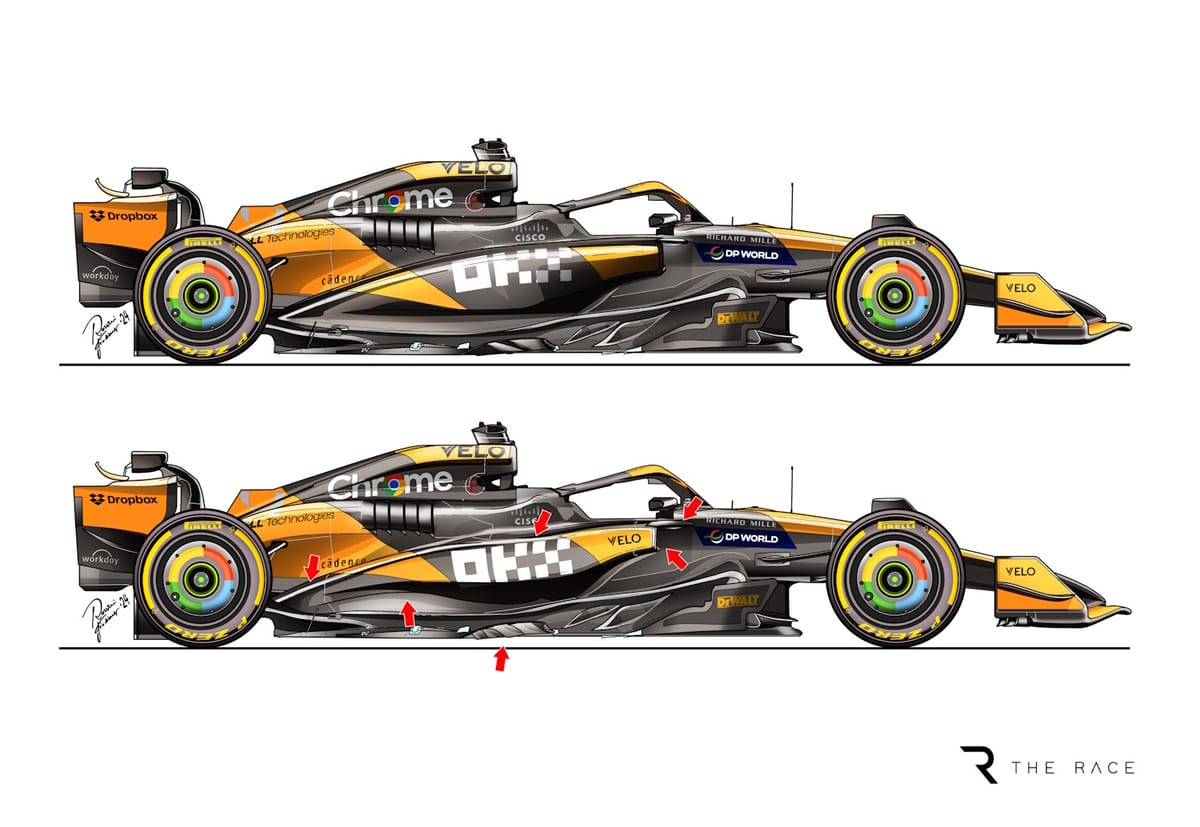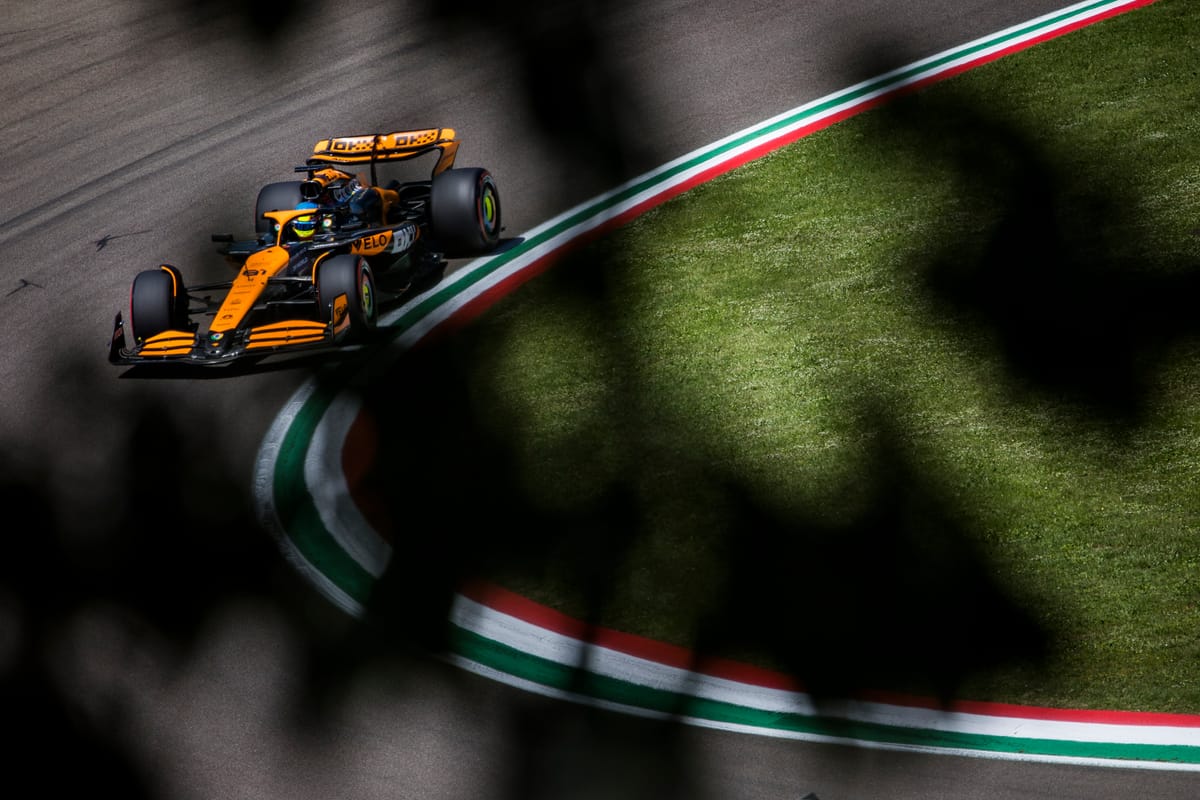Up Next

McLaren’s development direction over the past 18 months has been impressive, and the latest small-but-significant item was the introduction of a new front wing in Austria that Lando Norris almost took to the team's second Formula 1 victory of the season.
Developing any racing car is tough, but F1’s ground-effect cars are doubly difficult because you need such different characteristics between low-speed and high-speed corners that can mean the development route gets conflicted.
This is partly because the FIA restricts how much a team can alter the weight distribution. This was put in place thanks to Pirelli wanting to reduce the risk of any team overloading either the front or rear tyres and is a rule that has been in place since the start of 2011.
It’s controlled within approximately 1.5%, so no team has the opportunity to alter the weight distribution to improve the low-speed front grip and/or high-speed rear grip - so in effect this all has to be done aerodynamically.
The normal tendency for these cars is to understeer in low- and medium-speed corners. This turns to oversteer in high-speed corners. It is the degree of either that makes one team, and even driver, stand out from the other.
McLaren impresses me because it appears to be one of the only teams to actually understand this requirement. More importantly, it brings developments to the car that improve its overall performance in both low- and high-speed corners.
So, what changes between low- and high-speed corners can be made that has scope for a characteristic change?
First of all, there's the front and rear ride heights. These reduce with speed at about a 2:1 ratio front to rear. As the aerodynamic load builds up, so too secondarily does the steering angle, which increases for low-speed corners.
Taking that into account, it's important in maximising the overall downforce, especially the front at high ride heights and high steering angles, while using the underfloor splitters and profile to move that aerodynamic centre of pressure rearward at speed which will stabilise the rear of the car in high-speed corners.
As I always say, the airflow coming off the trailing edge of the front wing is what the rest of the car has to work with. This means it is the first thing you need to optimise and, the more uniform and consistent that flow is, the better your understanding of how to develop the underfloor will be.
As an example of what I would call a 'blind development direction', we heard the Ferrari drivers at the Red Bull Ring complain about the car bouncing again. This is when the losses from the airflow separation in the underfloor are greater than the downforce increase from higher speeds.
If you get into this situation, the car gets unstable and just starts bouncing. I’m sure Ferrari has improved its downforce numbers, but not in a driver-usable direction.
As a second example, Mercedes started the season with a unique front wing concept that everyone said the rest would copy. That’s now in the rubbish skip and both drivers claim the new, more conventional front wing design has brought the car alive.
It still has some way to go in that area, but it will be easier to understand the overall car with this wing concept, so Mercedes is on its way to being much more consistent performance-wise.
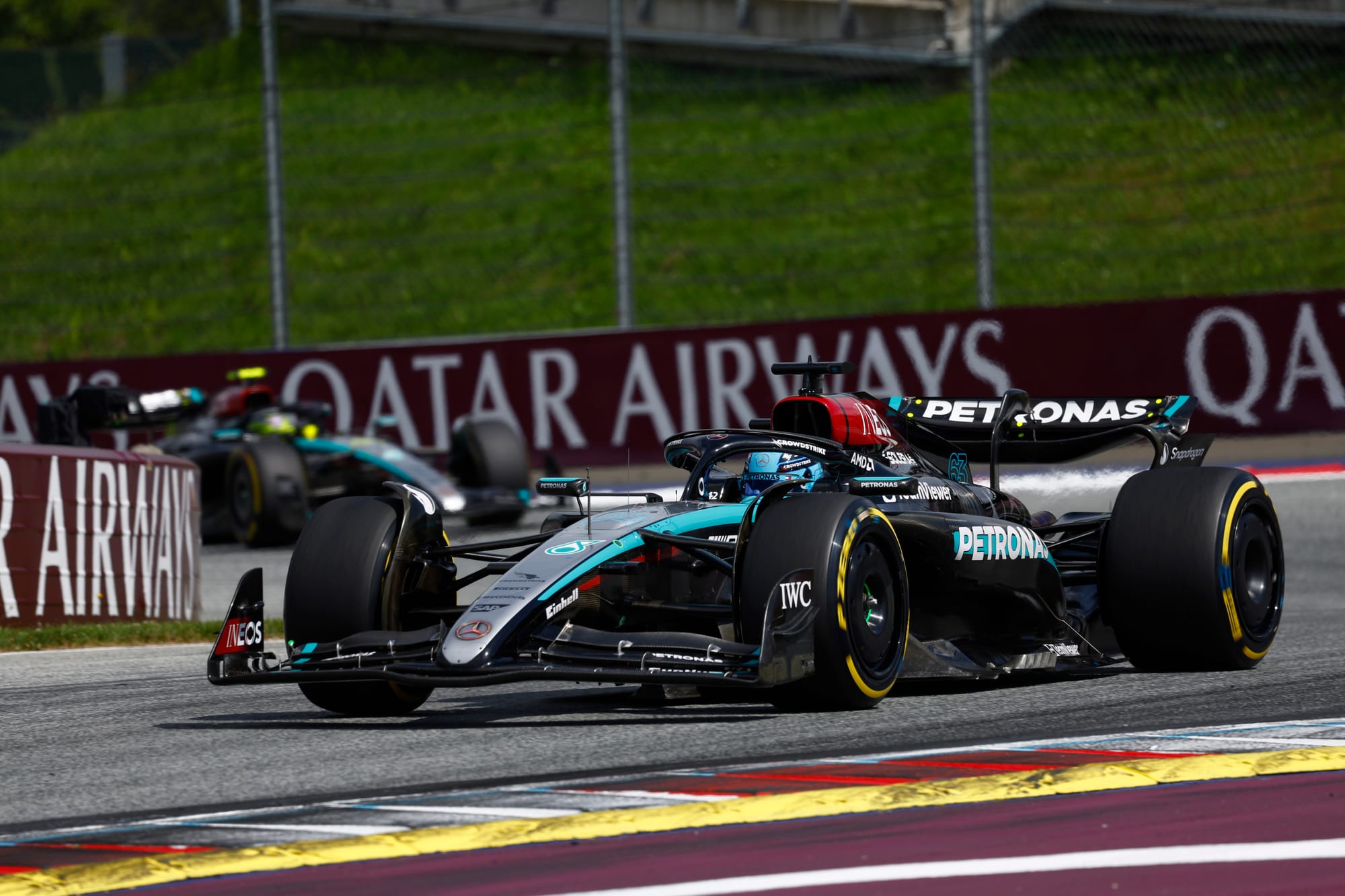
My The Race colleague Mark Hughes asked McLaren team principal Andrea Stella about the conflict between front wing behaviour in low-speed and high-speed corners when the new front wing first appeared.
“Especially with this generation of cars and this generation of front wing regulations, the geometries are very restricted,” said Stella. “Therefore, it’s difficult to achieve what you want in low speed, or at high steering angles, and what you want in a straight line, or what we want in high speed.
“This is a challenge that I'm sure all teams are facing and that's also why it's quite difficult to bring development on a front wing. Hopefully, the compromise we are working on is capable of delivering some low-speed benefit, but without affecting the high speed or the straightline [speed] too negatively.”
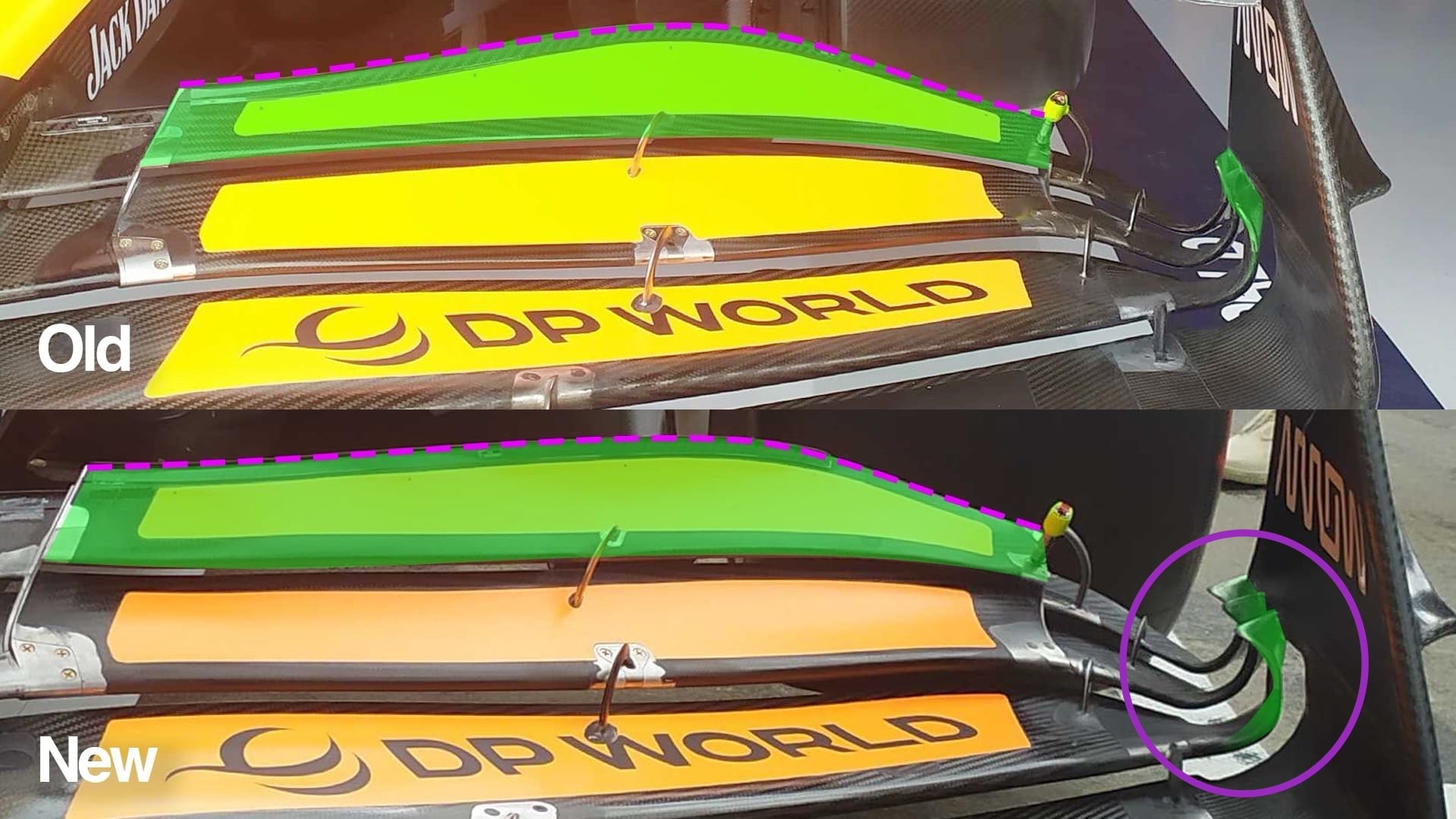
In the above comparison, we can see the small change to the rear-flap trailing edge (dotted magenta line). This improves the uniformity of the flow coming off the trailing edge of that flap.
But the main change is the detail inside the magenta ellipse. This is the area that changes with increased steering lock. Anything you can do to connect this area up to the flow that is going around the outside of the front tyre contact patch means that the front wing will work more efficiently at higher ride heights and increased steering lock.
In addition to the front wing change, there were also changes to the aerodynamic shrouds that house the front suspension, although the geometry has remained unchanged.
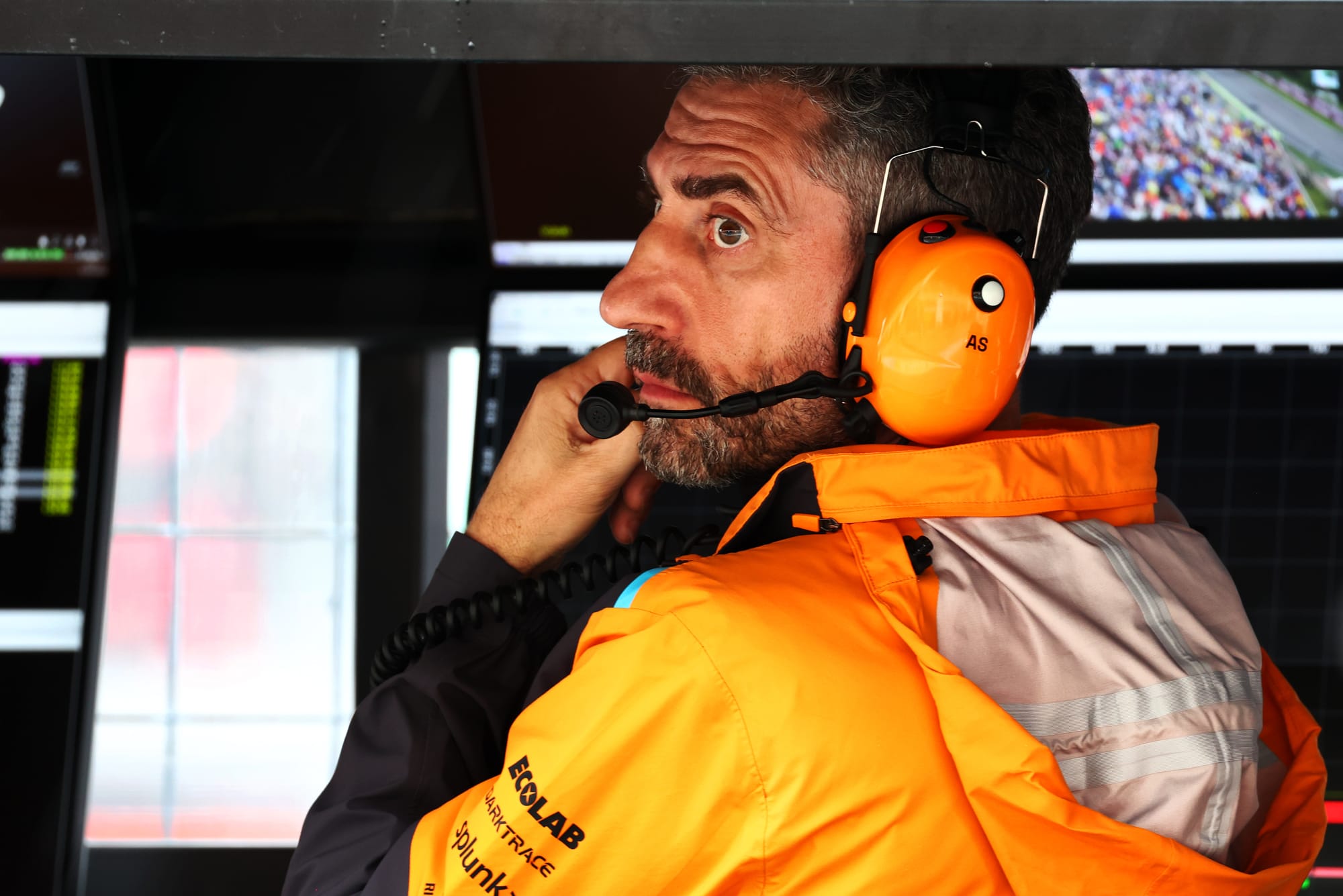
“It’s just the shrouds [that change] because when you change the front wing, it changes slightly the flow that goes to the back of the car,” said Stella. “You need to optimise the components downstream for the slight variation in the floor topology.
“This is very normal. I think I see more and more when teams bring front wing upgrades, they always upgrade the brake ducts and suspension shrouds. That's purely aerodynamics.”
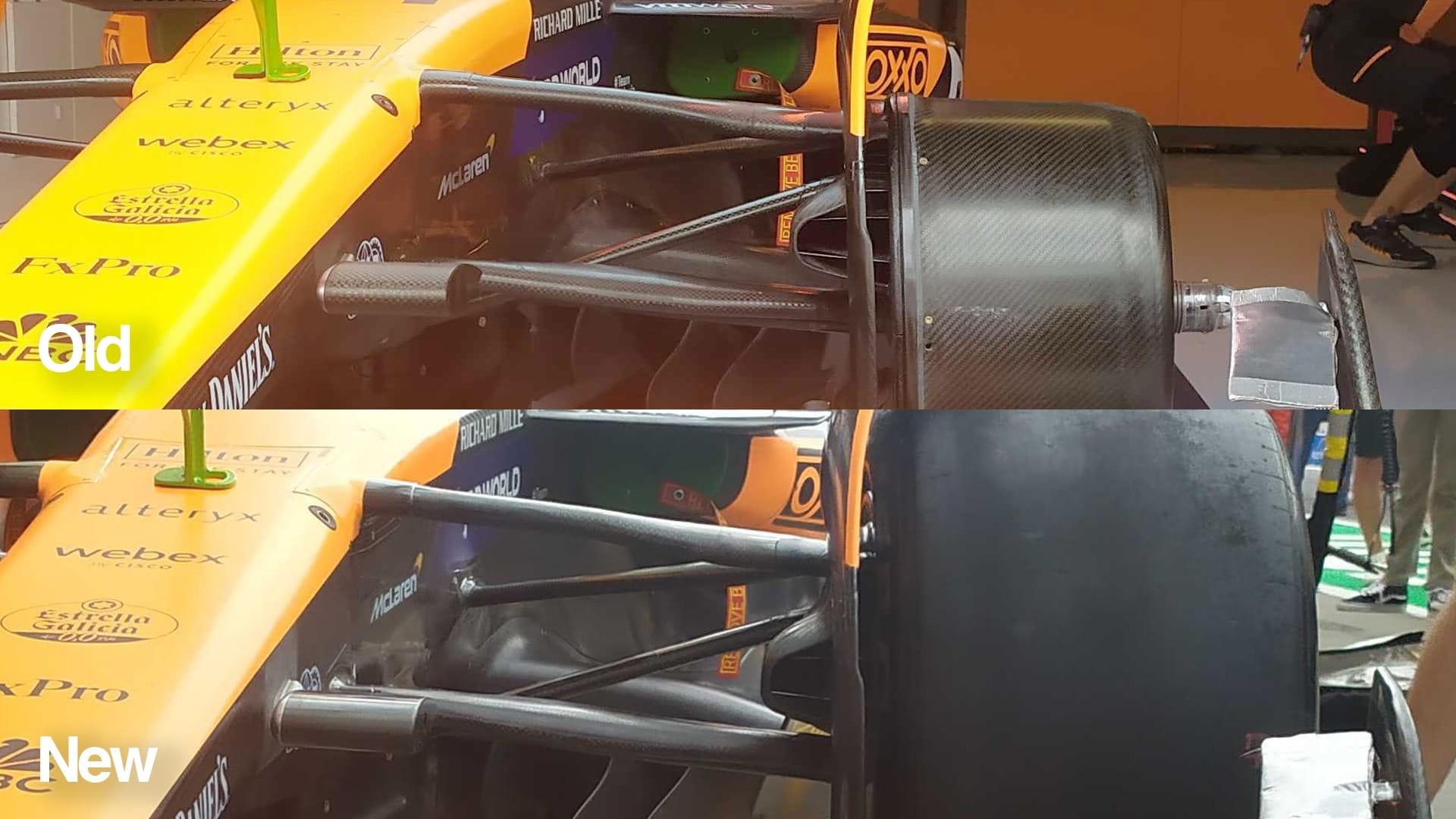
As Stella said, the changes in this area are very subtle but they need to be done to optimise the flow to the leading edge of the underfloor. The floor itself has its own detail requirements, but it will be easier to optimise it if the flow to that area is more consistent through the ride height and steering-lock range.
As Stella explained, the circle of improvements always continues in this way.
“The floor and the fences do respond to the incoming flow, but they also have their own justification for large changes," he added.
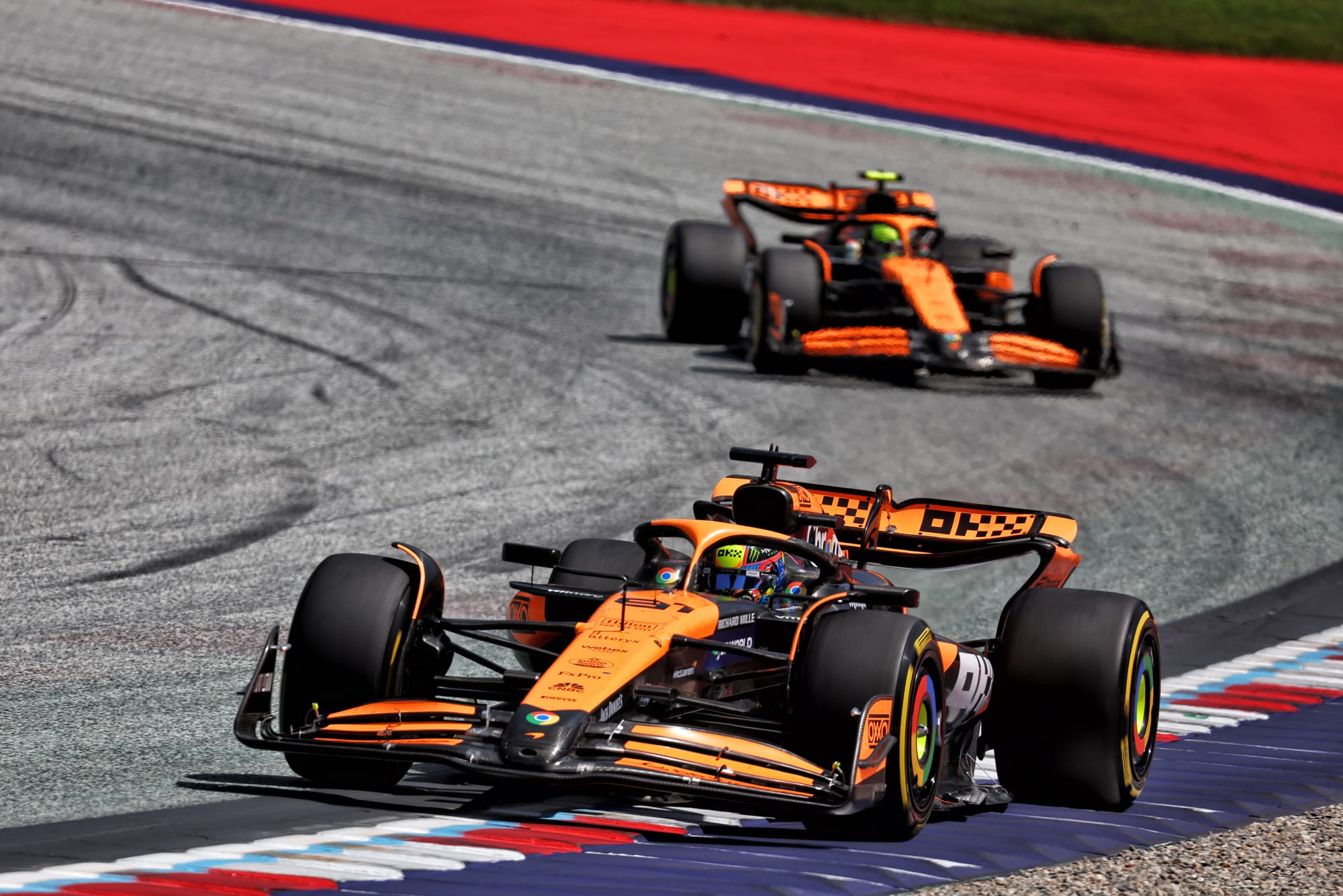
"The suspension is more of a passive component that really responds mainly to the front wing. if you develop a component like the floor, there's a lot more going on under the floor, which takes its own development direction.”
It is impressive how well McLaren has caught up with Red Bull and I genuinely believe it has caught up in terms of performance.
Yes, for Red Bull it's more difficult to make gains and stay at the top of the tree if it's already there, but with the regulations staying fairly stable for 2025 I’m sure McLaren with both its drivers can finish 2024 strongly and really mount a championship challenge for 2025.

